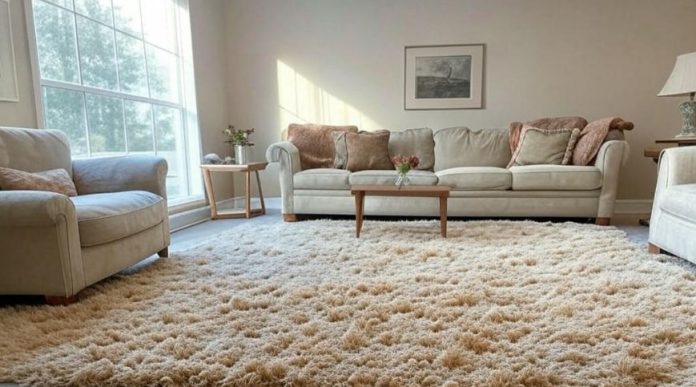You might be enchanted with the elegance of the touch and the feel of smoothness when you walk on a carpet.
Behind all these, the only factor that imparts this welcoming warmth is in the material the carpet it is made of. Of course the fibers!
Carpets come in different types of fibers with a gamut of styles and a variety in texture. Both natural and synthetic fibers are used to weave carpets.
Cotton, wool, silk, and jute fall under the natural fiber category while the synthetic fibers range from nylon, art silk, acrylic, and polypropylene.
The most popular natural fiber, cotton holds a major significance due to its abundant availability and low cost.
It is in vogue to weave hand-knotted carpets and can be kept clean with regular wash. That’s the easiest thing in it but a flaw always remains.
The cotton fiber carpet gets accumulated with dirt very rapidly and at the same time gets damaged by crumbles and crushes.
For a better durability in the list of natural fibers, carpets made of wool last longer. It is very elastic and determines the fineness of the carpet. The flexibility of the raw material gives it a better protective coat of durability.
Wool used in the making of carpets is mainly imported from Australia, New Zealand and India (especially the Kashmiri wool).
These are the best quality wools that create a luster of silky touch on the carpets. Wools are used to make hand knotted, woven and tufted carpets.
But woolen carpet creates a foul odor if soaked into water and not dried. So the tiding process is a bit tedious.
The costliest of all-natural fibers are silk. Mulberry silk carpets are world-famous for their finest textures.
To go for silk carpets with a cotton base can reduce the cost but retain the same appeal. The better alternative for a silk carpet is art silk carpet. The raw material is artificial silk and far cheaper than the original raw silk.
Nylon holds the most prominent position in the domain of synthetic fibers used in the making of carpets.
This is durable, cheap, easily cleanable, and also come in great designs and colors. Carpets that undergo strenuous pressure regularly should be made up of nylon for easy maintenance and high moisture resistance.
The advanced technology has allowed nylon carpet surfaces to maintain more friction thus allowing no dirt particles to stick on it.
In place of wool, acrylic gives this woolen feel. Similar to wool this synthetic fiber is flexible and bears an elastic quality and can better form a resistance to stains. The combination of wool and acrylic can be used to make tufted carpets and machine made carpets.
Polyester is gaining popularity in the carpet fibers nowadays. It can come up in wide range of colors and the surface is extremely soft with a luster.
But polyester carpets are not for regular use. If placed occasionally, people will be immediately drawn towards it otherwise the longevity of polyester carpets is not guaranteed.
This is not in the case of polypropylene. Much known for its strength, this is a light weight fiber for making carpets with better wearing quality.
You can keep away stains from polypropylene carpets and the chance of fading of colors is also low. This material is preferred by many outdoor carpets.
You can choose any of these fibers for the carpets at home or office as per the requirement. All are excellent if you are sure about your priorities.

